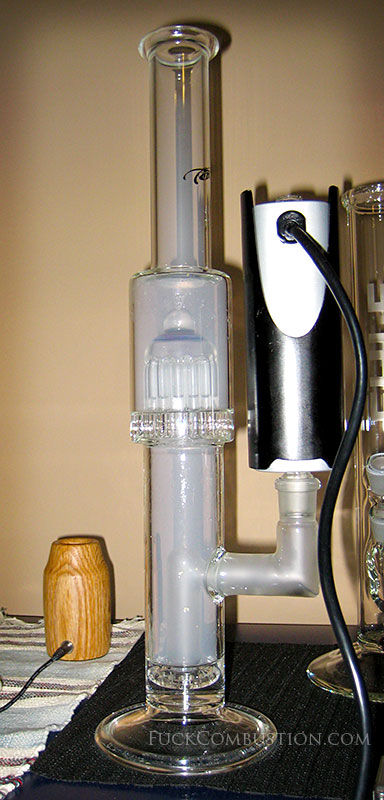. . . Also OBG thanks so much for linking me to that post of yours. Good information!
You're welcome. Here's the additional measurements I said I'd take
with the unit set full bore. Ambient 77F (2 above last tests), Fahrenheit. I again took readings at ~15 minutes and at 1+hr, with fresh .5 bowl inserted @~3 minutes (after the 15), then after taking 1 deep rip (omigod what a cloud - I need to hurry with this post), then replaced the ELB loaded with light ABV and letting that cook a while to approximate the herb at end-of-session. Readings are averages within +/- 2F. Casings were measured in the area close and around the screws. Readings (in each pair the first number is the 15 minute, second is the 1+ hour):
Bottom casing, right = ~112-121 (@noon = ~105-115)
Bottom casing, left = ~115-123
Top Casing, right = ~118-125 (@noon = ~110-120)
Top casing, left = ~123-128
Screws are consistently 2-1 hotter at all readings
Previously @noon the joint ranged from ~180-200. As I mentioned before, there was a lot of oscillation in the readings. While the curvature contributes to this, what I found was that there is a fascinating heat progression from the joint to the tip. At 15 minutes after green it was ~160-220 bottom to top and at >1hr it was ~180-240, the 160/180 being right at the joint.
ELB top cap, ~155-160 (@noon = 150)
ELB bottom, ~155-160 (@noon = ~130)
ELB ID, ~180-200 (@noon = ~150-160)
Herb, ~140-150 (@noon = ~135-140)
The ELB ID reading is probably high due to proximity to the hotter joint and the wire mesh.
I was surprised that the herb was only a bit hotter.
Whew!










 As said above, please report posts that you feel are breaking the
As said above, please report posts that you feel are breaking the 



